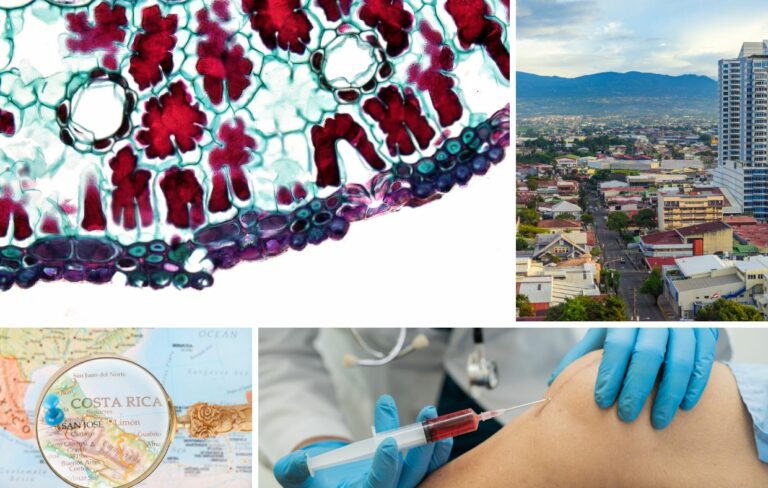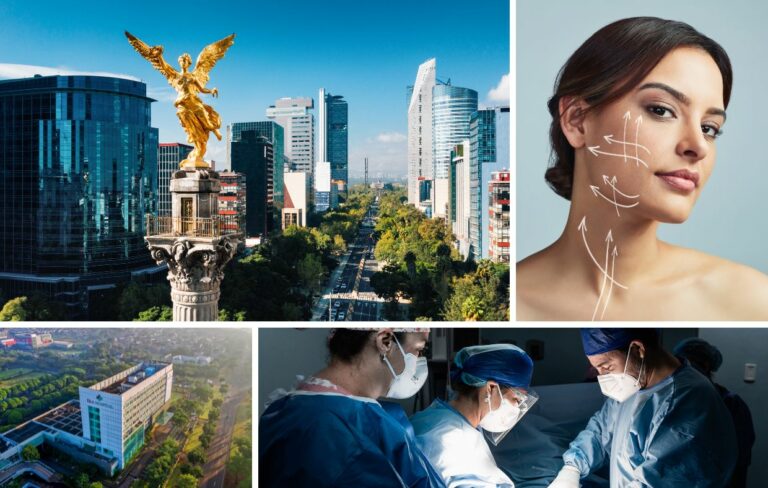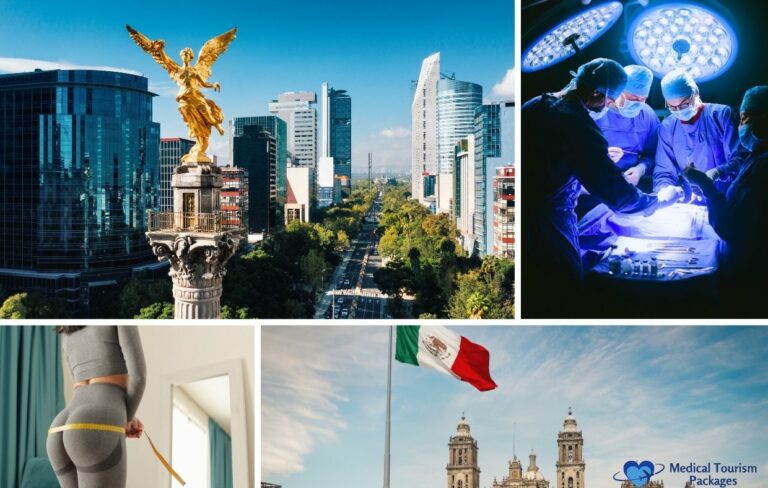Book Appointment Now
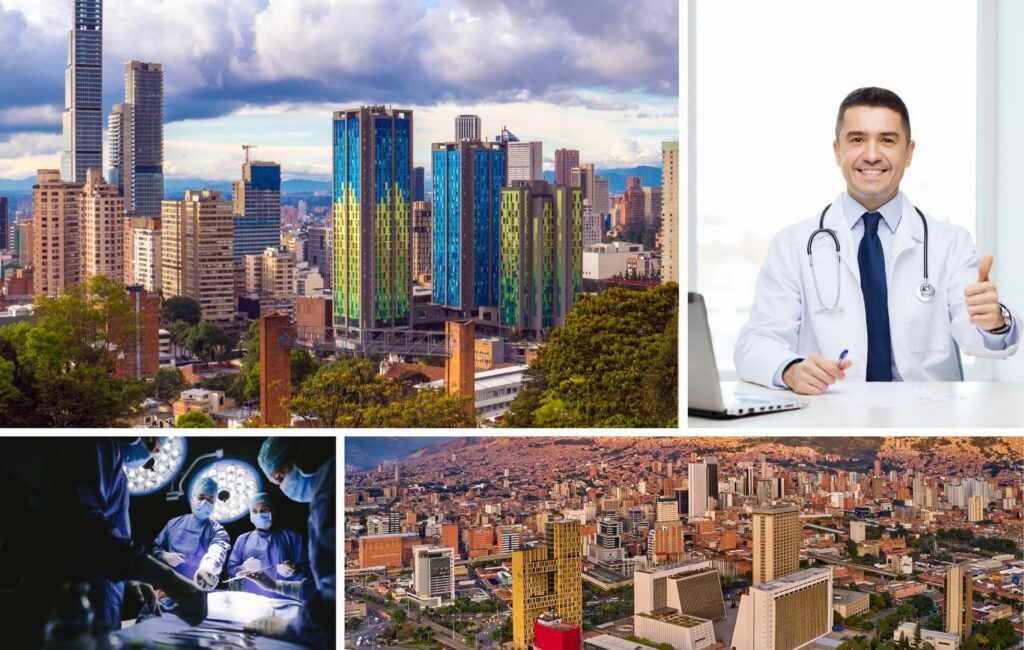
5 Common Myths About Medical Tourism in Latin America: Debunked
This article debunks common medical tourism myths about healthcare in Latin America, clarifying misconceptions that prevent travelers from seeking quality care abroad. Latin America has become a significant destination for medical tourists seeking high-quality care at affordable prices. The region includes top destinations like Mexico’s scenic landscapes, Colombia’s bustling cities, Costa Rica’s eco-friendly retreats, Panama’s modern infrastructure, and Brazil’s world-class medical centers. This exploration highlights the appeal beyond cost savings, focusing on the region’s healthcare strengths and advanced medical capabilities that rival those found in developed nations.
With internationally accredited facilities, highly trained professionals, and a strong emphasis on patient safety, Latin America showcases its progress in global healthcare. The region’s hospitals and clinics maintain rigorous international standards while offering personalized care that often exceeds what patients experience in their home countries. We address the most common medical tourism myths and present the truth about the region’s accessible, high-quality medical services that rival those in the United States. From JCI-accredited hospitals to ISO-certified clinics, Latin America’s healthcare infrastructure continues to evolve and improve, attracting thousands of international patients annually.
What is Medical Tourism in Latin America and Why Should You Consider It?
Medical tourism in Latin America involves individuals traveling from around the world to access healthcare services in Latin American countries. This growing trend attracts patients from the United States, Canada, and Europe who seek quality medical care combined with significant cost savings. The phenomenon has transformed the healthcare landscape across the region, with countries investing heavily in medical infrastructure and training to meet international standards.
This trend is driven by several compelling factors that make Latin America an attractive medical destination:
- Affordability compared to United States prices (savings of 40-80%)
- High quality of care in JCI-accredited hospitals and modern clinics
- Reduced waiting times for surgeries and procedures
- Access to specialized treatments including plastic surgery, fertility treatments, and bariatric surgery
- English-speaking medical staff trained in the United States or Europe
The region’s leading medical tourism destinations each offer unique advantages for international patients:
- Mexico: Border proximity to the United States, extensive network of specialized clinics, expertise in dental and cosmetic procedures
- Colombia: Over 20,000 international patients annually in cities like Medellín and Bogotá, renowned for plastic surgery and cardiovascular procedures
- Costa Rica: Two JCI-accredited hospitals (Hospital Clínica Bíblica and CIMA Hospital) specializing in dental treatments, cosmetic surgery, and orthopedic procedures
- Panama: Hospital Punta Pacífica (affiliated with Johns Hopkins Medicine International) and Hospital Nacional offer cardiology, neurosurgery, and specialized cancer treatments
- Brazil: World leader in cosmetic surgery techniques, advanced cancer treatment centers, pioneering research facilities
The growth of medical tourism is supported by internationally accredited healthcare facilities that maintain global standards through partnerships with renowned institutions like Johns Hopkins, Cleveland Clinic, and other prestigious medical centers. These hospitals and clinics ensure patients receive care comparable to or better than what they find at home, often with more personalized attention and shorter wait times. Medical tourism in Latin America successfully combines affordable, high-quality care with appealing recovery destinations, making it an increasingly popular choice for patients worldwide.

- Substandard medical facilities
- Unqualified medical staff
- Unsafe medical treatments
- Language barrier difficulties
- Only cost-driven value proposition
Myth 1: Latin American Medical Facilities Are Substandard Compared to the United States
One of the most persistent medical tourism myths is that medical facilities in Latin America are substandard compared to those in developed countries. This misconception prevents many potential patients from accessing excellent care at affordable prices. The reality is completely different: Latin American hospitals and clinics have invested billions in state-of-the-art equipment and facilities that often surpass what’s available in many United States hospitals. These investments have transformed the region’s healthcare landscape over the past two decades.
Many hospitals and clinics across the region have earned prestigious international accreditations that verify their commitment to excellence:
- Joint Commission International (JCI) accreditation in Mexico, Brazil, Colombia, Costa Rica, and Panama
- ISO 9001 and ISO 9002 certifications for quality management systems
- ISQua (International Society for Quality in Healthcare) recognition
- AAAASF (American Association for Accreditation of Ambulatory Surgery Facilities) certification
- NABH (National Accreditation Board for Hospitals) accreditation
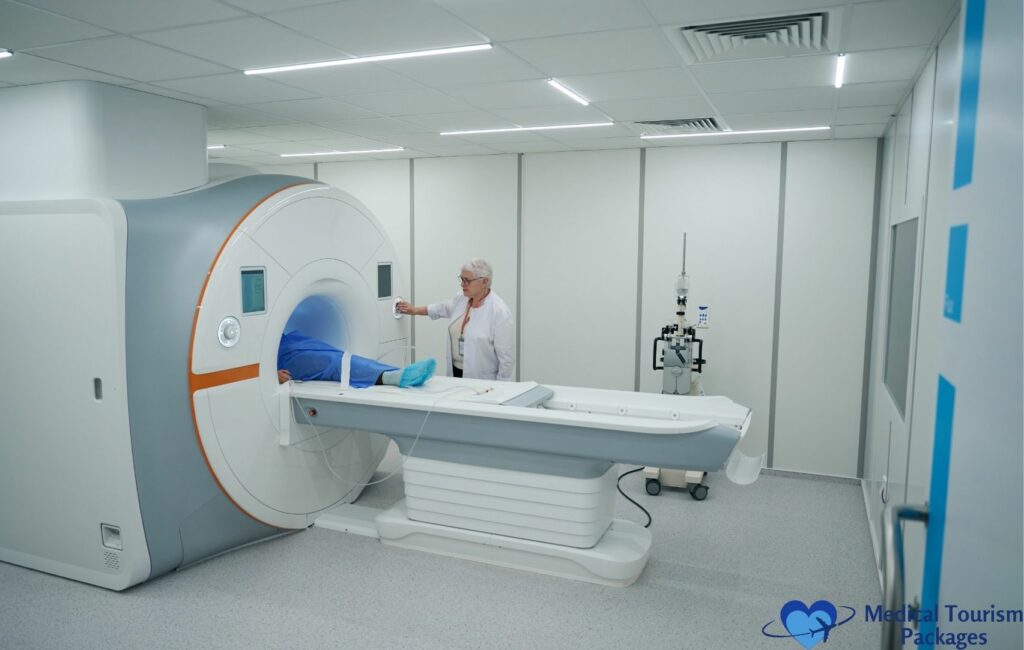
These facilities have advanced medical technology that often exceeds what you’ll find in United States hospitals. They feature the latest MRI machines, robotic surgery systems, and cutting-edge laboratory equipment. Latin American medical centers regularly update their technology to maintain competitive advantages in the global healthcare market. They ensure patients receive modern treatments and the latest innovations in healthcare, from minimally invasive procedures to advanced diagnostic capabilities.
JCI-Accredited Hospitals Throughout Colombia, Costa Rica, and Panama Maintain International Standards
Hospitals in Colombia, Costa Rica, and Panama frequently hold JCI accreditation, the gold standard in international healthcare quality. This confirms they meet the same safety and quality standards as top United States medical centers. For example, Costa Rica’s Hospital Clínica Bíblica was the first in Central America to receive JCI accreditation, setting a precedent for excellence. Panama’s Hospital Punta Pacífica maintains its affiliation with Johns Hopkins Medicine International, ensuring world-class protocols and procedures. Colombia boasts multiple JCI-accredited facilities in major cities, with some hospitals treating over 20,000 international patients annually.
Continuous Investment in Advanced Medical Technology and State-of-the-Art Equipment
Latin American countries invest heavily in modern medical technology to remain competitive in the global healthcare market. They purchase advanced surgical equipment, diagnostic tools, and treatment technologies from the same suppliers that equip top United States and European hospitals. This ensures patients can access the latest treatments for everything from routine dental work to complex procedures like bariatric surgery and fertility treatments. Many facilities feature hybrid operating rooms, 3D imaging systems, and robotic-assisted surgery capabilities that represent the cutting edge of medical technology.
Myth 2: Medical Staff in Latin America Lack Proper Qualifications and Training
Another damaging misconception among medical tourism myths relates to staff qualifications and training standards. The truth is that medical professionals in Latin America often exceed international training requirements. Many doctors complete their medical education at prestigious institutions before pursuing additional specialization in the United States or Europe. This international exposure ensures they bring global best practices back to their home countries. The medical education system in Latin America maintains rigorous standards, with many programs requiring more clinical hours than their United States counterparts.
Healthcare professionals regularly participate in international conferences, continuing education programs, and collaborative research projects with leading medical institutions worldwide. English proficiency has become standard among medical staff in major hospitals and clinics, particularly those serving international patients. This combination of advanced qualifications and multilingual abilities demonstrates the region’s serious commitment to providing world-class healthcare. Medical professionals often hold certifications from multiple countries, allowing them to practice internationally and bringing diverse perspectives to patient care.
Internationally Trained Doctors and Medical Specialists with Global Certifications
Doctors throughout Latin America frequently hold international certifications from prestigious medical boards and societies. Many completed residencies or fellowships at renowned institutions like Mayo Clinic, Cleveland Clinic, or Johns Hopkins. They apply the latest medical techniques in specialties ranging from plastic surgery and orthopedics to cardiology and oncology. These physicians often publish in international medical journals and contribute to advancing their fields globally. Their training ensures patients receive care that meets or exceeds international standards.
Widespread English Proficiency Among Healthcare Staff in Major Medical Tourism Centers
Healthcare professionals in major hospitals and clinics throughout Latin America demonstrate excellent English proficiency. Medical schools increasingly require English language courses, recognizing the importance of international communication in modern healthcare. This linguistic capability helps international patients communicate effectively with their entire care team, from surgeons to nurses to administrative staff. Many facilities also employ staff fluent in other languages, including French, Portuguese, and German, to serve their diverse patient populations. This multilingual environment significantly improves the overall medical tourism experience.
Myth 3: Medical Treatments in Latin America Are Unsafe and Unregulated
The misconception that medical treatments in Latin America are unsafe represents one of the most damaging medical tourism myths preventing patients from accessing quality care. In reality, Latin American medical facilities operate under strict regulatory frameworks that often exceed international requirements. Government health ministries work closely with international accreditation bodies to ensure consistent safety standards across all certified facilities. These regulations cover everything from surgical protocols to infection control measures, creating a comprehensive safety net for patients.
Treatment outcomes in Latin American medical centers consistently match or exceed those reported in the United States and Europe. Independent studies have shown that complication rates for common procedures are comparable to or lower than those in developed countries. Many patients report not just positive clinical outcomes but exceptional overall experiences that surpass their expectations. Patient satisfaction scores often exceed 95% in leading Latin American medical tourism facilities, reflecting the high quality of care provided.
Rigorous Health and Safety Protocols in All Internationally Accredited Medical Facilities
Latin American medical facilities implement and maintain strict health and safety measures that align with international best practices. Every aspect of patient care, from pre-operative assessment to post-surgical recovery, follows standardized protocols designed to minimize risks and optimize outcomes. These facilities undergo regular audits by international accreditation bodies to ensure continued compliance with evolving global standards. Staff receive ongoing training in the latest safety procedures, including infection prevention, medication management, and emergency response protocols. This comprehensive approach to safety encompasses all medical specialties, from plastic surgery and fertility treatments to bariatric surgery and cardiac procedures.
Clinical Treatment Outcomes Comparable to United States and European Healthcare Standards
Medical procedures performed in Latin America consistently produce clinical outcomes that match or exceed international benchmarks. Success rates for complex surgeries, cancer treatments, and other advanced procedures align with those reported by leading medical centers in the United States and Europe. Latin American facilities track and report their outcomes transparently, participating in international databases that allow for meaningful comparisons. Many centers of excellence in the region have pioneered innovative techniques that have been adopted globally. This commitment to excellence challenges outdated perceptions about healthcare quality in developing nations.
Thousands of Real Patient Testimonials Confirm Safety and Quality Standards
International patients consistently praise the high level of safety and care they receive at Latin American medical facilities. Online platforms and medical tourism forums feature thousands of detailed testimonials from patients who underwent successful treatments across the region. These firsthand accounts provide compelling evidence of the quality healthcare services available, often highlighting aspects like personalized attention, thorough follow-up care, and excellent clinical outcomes. Many patients become advocates for Latin American medical tourism, referring friends and family members based on their positive experiences.
Myth 4: Language Barriers Make Medical Tourism in Latin America Too Difficult
The belief that language barriers create insurmountable challenges represents another outdated entry in our list of medical tourism myths. Modern Latin American medical facilities have completely transformed their approach to serving international patients. Hospitals and clinics catering to medical tourists now operate as truly multilingual environments, with services available in English, French, Portuguese, and other languages. This linguistic diversity extends beyond basic communication to include all medical documentation, consent forms, and patient education materials.
Professional medical interpretation services have become standard in major medical tourism destinations throughout Latin America. These interpreters receive specialized training in medical terminology and cultural sensitivity, ensuring accurate communication during all phases of treatment. Many facilities employ full-time international patient coordinators who serve as cultural bridges, helping patients navigate not just language differences but also healthcare system variations. This comprehensive language support eliminates communication concerns and significantly enhances the patient experience.
Comprehensive Multilingual Services Available at All Major Hospitals and Medical Clinics
Leading hospitals throughout Latin America have developed sophisticated multilingual service programs to support their international patients. These programs go beyond simple translation to include culturally appropriate care delivery that respects patients’ backgrounds and preferences. Major medical centers in Costa Rica, Panama, and Colombia maintain dedicated international patient departments staffed by bilingual professionals who coordinate all aspects of care. From initial consultation through post-operative follow-up, patients can communicate in their preferred language. Many facilities also offer multilingual websites, allowing patients to research procedures and facilities before traveling.
Professional Medical Interpreters Available Twenty-Four Hours for All International Patients
Round-the-clock professional interpretation services ensure that language never becomes a barrier to receiving quality care. These interpreters undergo rigorous training in medical terminology, anatomy, and procedure-specific vocabulary to ensure accurate communication. They accompany patients during consultations, help explain treatment options, and ensure informed consent is truly informed. Many facilities use video interpretation technology to provide immediate access to interpreters for less common languages. This comprehensive language support system has become a hallmark of quality medical tourism facilities throughout Latin America.
Myth 5: Medical Tourism in Latin America Only Offers Value Through Low Prices
The final and perhaps most limiting of our medical tourism myths suggests that cost savings represent the only advantage of seeking medical care in Latin America. While it’s true that procedures typically cost 40-80% less than in the United States, this dramatic price difference is just one element of a comprehensive value proposition. Latin American medical tourism offers unique advantages that extend far beyond financial considerations, creating an overall experience that many patients find superior to what they could access in their home countries.
The complete value proposition of Latin American medical tourism includes multiple compelling benefits:
- Access to innovative treatments and procedures not yet approved or available in other countries
- Dramatically shorter wait times for both elective and critical surgeries
- Personalized, patient-centered care with significantly more one-on-one time with physicians
- Advanced procedures in specialties like plastic surgery, fertility treatments, and bariatric surgery
- Recovery in beautiful, peaceful settings that promote healing and wellbeing
- Opportunity to combine medical care with vacation experiences for accompanying family members
- Holistic treatment approaches that integrate traditional and alternative medicine options
This comprehensive approach demonstrates Latin America’s dedication to redefining medical tourism as a premium healthcare option that happens to be more affordable, rather than a budget alternative that compromises on quality.
Exclusive Medical Treatments and Innovative Procedures Available in Latin American Countries
Latin America has become a global leader in several medical specialties, offering treatments and procedures that attract patients regardless of cost considerations. The region’s plastic surgeons have pioneered techniques now used worldwide, particularly in body contouring and facial aesthetics. Fertility clinics offer advanced reproductive technologies with success rates exceeding many United States centers. Stem cell therapies and regenerative medicine treatments, available under different regulatory frameworks, provide options for patients with conditions that have limited treatment alternatives elsewhere. Some cancer treatment protocols and immunotherapy approaches are available years before approval in other countries.

Significantly Shorter Wait Times for Both Elective and Critical Medical Procedures
One of the most significant advantages of medical tourism in Latin America is the ability to schedule procedures quickly, often within weeks rather than months or years. This rapid access to care can be life-changing for patients suffering from chronic pain or progressive conditions. In countries with public healthcare systems, wait times for procedures like hip replacements or cataract surgery can extend beyond a year. Latin American facilities typically schedule these same procedures within 2-4 weeks of initial consultation. For cancer patients, the ability to begin treatment immediately rather than waiting can significantly impact outcomes.
Exceptional Personalized Medical Attention and Comprehensive Patient-Centered Care Approaches
Latin American medical culture emphasizes personal relationships between physicians and patients, resulting in a more attentive and comprehensive care experience. Doctors typically spend 3-5 times longer with patients during consultations compared to the rushed appointments common in many developed countries. This extended interaction allows for thorough discussion of treatment options, concerns, and expectations. Post-operative care includes frequent physician visits and accessibility that many patients find remarkable. Nurses and support staff maintain lower patient-to-staff ratios, enabling more attentive care throughout the recovery process. This personalized approach contributes significantly to both clinical outcomes and patient satisfaction.
Frequently Asked Questions About Medical Tourism Myths and Facts in Latin America
What exactly is medical tourism in Latin America and how does it work?
Medical tourism in Latin America involves traveling to countries like Mexico, Colombia, Costa Rica, Panama, or Brazil for medical treatments and procedures. The process typically begins with researching accredited facilities and qualified specialists, followed by remote consultations to discuss treatment options. Patients then travel to their chosen destination where they receive care at modern hospitals and clinics that meet international standards. Most facilities offer comprehensive packages including airport transfers, accommodation, translation services, and post-operative care. Patients worldwide seek care in Latin America because of affordable prices (40-80% savings), high-quality services, minimal wait times, and access to advanced treatments. These medical centers often exceed United States quality benchmarks while providing more personalized attention.
Are medical facilities in Latin America truly safe and reliable for international patients?
Yes, medical facilities throughout Latin America maintain exceptional safety and reliability standards. Leading hospitals in Mexico, Colombia, Costa Rica, Panama, and Brazil hold prestigious international accreditations including JCI (Joint Commission International), ISO 9001, ISQua, and AAAASF certifications. These accreditations require facilities to meet rigorous safety protocols, maintain quality standards, and undergo regular audits. Many Latin American hospitals have formal partnerships with renowned institutions like Johns Hopkins, Cleveland Clinic, and Mayo Clinic, ensuring they follow the same procedures and protocols. The medical technology in these facilities often surpasses what’s available in many United States hospitals, featuring the latest diagnostic equipment and surgical tools. Patient safety records and clinical outcomes consistently match or exceed international benchmarks.
How do Latin American medical facilities handle language barriers for international patients?
Language barriers are virtually non-existent at major medical tourism facilities throughout Latin America. Leading hospitals and clinics in Costa Rica, Panama, Colombia, Mexico, and Brazil maintain dedicated international patient departments with multilingual staff. Most doctors and nurses at these facilities speak fluent English, having trained in the United States or Europe. Professional medical interpreters are available 24/7 to assist with consultations, procedures, and recovery care. All medical documents, consent forms, and discharge instructions are provided in the patient’s preferred language. Many facilities also offer interpretation services in French, German, Portuguese, and other languages. This comprehensive language support ensures clear communication throughout the entire medical journey, from initial consultation to follow-up care.
Are medical treatments in Latin America as safe as those performed in the United States or Europe?
Medical treatments performed in accredited Latin American facilities are equally safe as those in the United States or Europe. These medical centers follow identical safety protocols and clinical guidelines established by international healthcare organizations. Success rates and complication statistics for procedures ranging from routine surgeries to complex operations match or exceed those reported by leading United States hospitals. The medical staff undergo the same rigorous training, often at the same institutions as their United States counterparts. Quality control measures include regular audits, outcome tracking, and continuous improvement programs. Thousands of patient testimonials and independent studies confirm that safety standards meet or exceed international expectations. Many patients report that the additional time and attention they receive in Latin American facilities actually contributes to better outcomes.
What types of medical procedures are most commonly performed for international patients in Latin America?
Latin America offers a comprehensive range of medical procedures for international patients, with certain specialties achieving particular recognition for excellence. The most sought-after treatments include:
- Dental treatments: Full mouth reconstructions, dental implants, veneers, and complex restorative procedures at 70% savings
- Plastic surgery and cosmetic procedures: Brazilian butt lifts, rhinoplasty, facelifts, breast augmentation, and body contouring with world-renowned surgeons
- Bariatric surgery: Gastric sleeve, gastric bypass, and revision surgeries with comprehensive nutritional support programs
- Orthopedic surgeries: Hip and knee replacements, spinal procedures, and sports medicine treatments
- Fertility treatments: IVF, egg donation, and advanced reproductive technologies with high success rates
- Cardiac procedures: Bypass surgery, valve replacements, and minimally invasive cardiac interventions
- Cancer treatments: Innovative protocols and immunotherapy options
- Ophthalmology: LASIK, cataract surgery, and advanced vision correction procedures
Many patients also seek specialized treatments in regenerative medicine, stem cell therapy, and alternative cancer treatments that may have limited availability in their home countries.
What are the most persistent medical tourism myths about healthcare in Latin America?
The most damaging medical tourism myths that prevent people from accessing excellent care in Latin America include the false beliefs that facilities are substandard, doctors lack proper training, treatments are unsafe, language barriers create problems, and the only advantage is low cost. Each of these myths has been thoroughly debunked by the reality of modern Latin American healthcare. The region’s medical centers feature JCI accreditation, ISO certifications, and partnerships with world-renowned institutions. Doctors train at top international medical schools and maintain certifications from multiple countries. Safety protocols meet or exceed international standards, with outcomes data supporting excellent results. Comprehensive multilingual services eliminate communication barriers. Beyond cost savings, patients benefit from shorter wait times, personalized care, and access to innovative treatments. Understanding these facts helps patients make informed decisions about their healthcare options.

